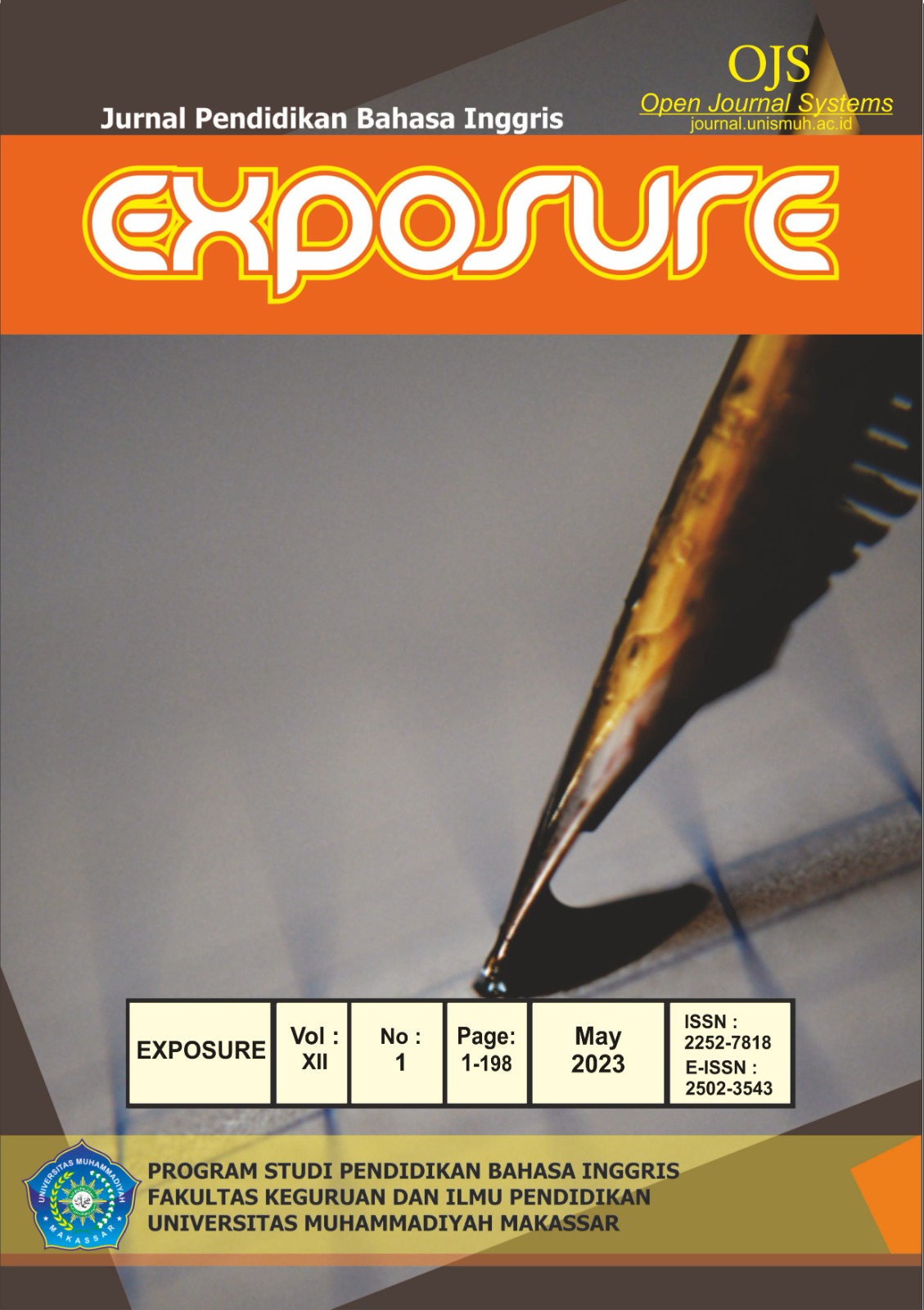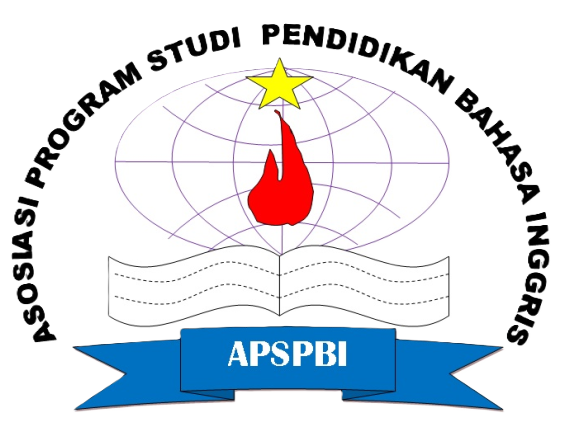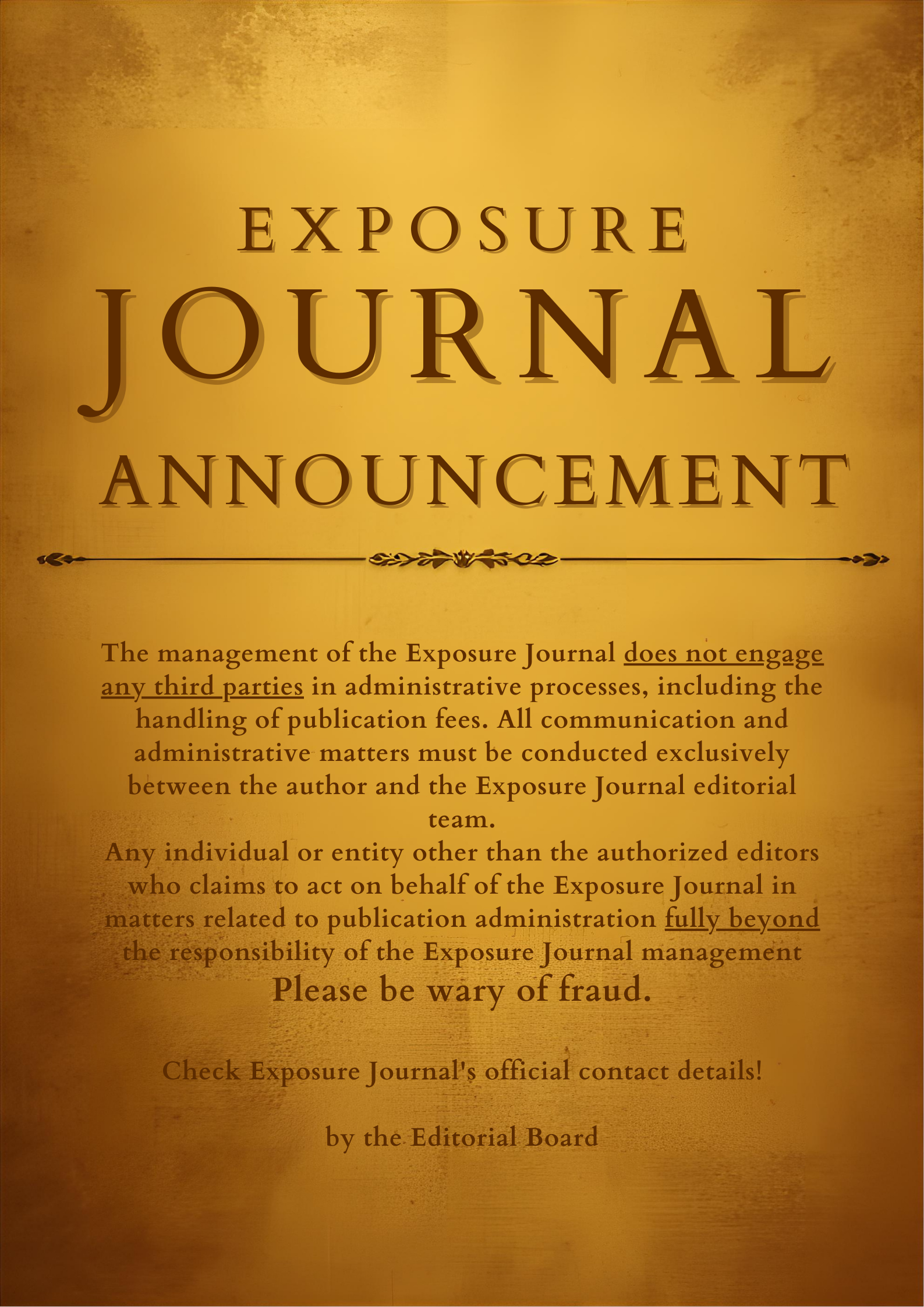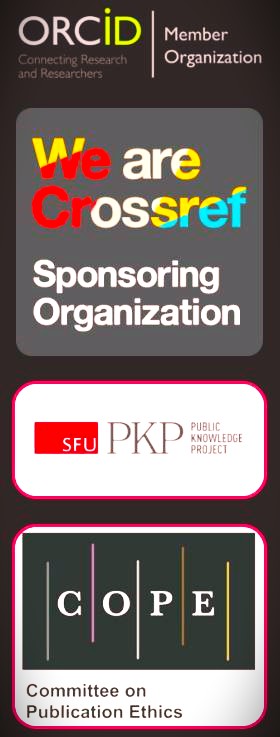ANALYZING THE POSITIVE & NEGATIVE POLITENESS STRATEGIES PERFORMED IN ELT CLASSROOM INTERACTION
DOI: https://doi.org/10.26618/exposure.v12i1.10660
Politeness Strategies, ELT, Classroom Interaction
Abstract
The practices of pragmatic politeness strategies in ELT contexts have been considered as the today’s important issues in ELT, what so-called as language in use in classroom discourse. Classroom interaction is the integral part of Classroom Discourse Analysis. This study aimed at finding what politness strategies employed by the classroom participants (lecturers & students) and the frequency of the politeness usages. This study was carried out by using a descriptive-qualitative research method. The data were obtained from the conversation done by all participants of ELT classroom; lecturers-learners, learners-lecturers, and learners-learners at the sixth semester of English Education department of Mandalika University of Education (the former IKIP Mataram). The data of research were analyzed through the process of identifying, classifying, grouping and making conclusion, then discussing. Of the two politeness strategies which are found are seven positive politeness consists of strategy 1, strategy 2, strategy 3, strategy 4, strategy 5, strategy8 (claim common grounds) and strategy 13 (convey that S and H are cooperators). The negative politeness are strategy 1 (be indirect), strategy 2 (don’t presume/assume), strategy 4, strategy 5 (don’t coerce H), strategy 6, strategy 7, and strategy 9 (communicate S’s want to not impinge on H). The most-frequently employed politeness strategies are positive politeness strategies within various (sub) strategies under ELT classroom contexts. The more usages of positive politeness suggest the situation of classroom must have been little bit egalitarian atmosphere amongs all the participants; lecturers-students in doing ELT process. Those feel cofortable, clossed, friendly, and inclusive to the addresse in ELT contexts.References
-, J., & Tanto, T. (2018). Request Strategies in Indonesian: An Analysis of Politeness Phenomena in Text Messages. Journal of Language and Literature, 18(2), 137–145. https://doi.org/10.24071/joll.v18i2.1569
Adhari, S., Yendra, & Sesmiyanti, S. (2022). Positive Politeness Strategies In Classroom Interaction at EFL Class. Journal of Language, Literature, and English Teaching (JULIET), 3(2), 43–55. https://doi.org/10.31629/juliet.v3i2.4172
Ambarwati, R., Nurkamto, J., & Santosa, R. (2019). Phatic and Politeness on Women’s Communication in FAcebook: Humanistic Teaching Perspective of Being Polite in Social Media. Indonesian Journal of English Language Teaching and Applied Linguistics, 4(1), 95–108.
Bogdan, B., & Bilken, S. K. (1992). Quality research for education: An introduction to theory and methods. Qualitative Research For Education An Introduction to Theory and Methods : : Allyn and Bacon., 106–156.
Brown, P., & Levinson, S. C. (1987). Politeness: Some Universals in Language Usage (Studies in Interactional Sociolinguistics 4). In TESOL Quarterly. Cambridge University Press. https://doi.org/10.2307/3587263
Eshghinejad, S., & Moini, M. R. (2016). Politeness Strategies Used in Text Messaging: Pragmatic Competence in an Asymmetrical Power Relation of Teacher–Student. SAGE Open, 6(1). https://doi.org/10.1177/2158244016632288
Farida, F., & Yuliana, D. (2019). Politeness Strategies in WhatsApp Text Messaging Between Sundanese Students and Lecturers. 257(Icollite 2018), 172–175. https://doi.org/10.2991/icollite-18.2019.37
Fitriyani, S., & Andriyanti, E. (2020). Teacher and Students ’ Politeness Strategies in EFL Classroom Interactions. IJELTAL: Indonesian Journal of English Language Teaching and Applied Linguistics, 4(2), 259–273.
Handayani, R., Rachmawati, & Arif, T. Z. Z. Al. (2022). POLITENESS STRATEGIES CONVEYED BY THE STUDENTS IN ONLINE DISCUSSIONS. Jambi-English Language Teaching Journal, 6(2), 74–87. https://doi.org/10.21608/pshj.2022.250026
I Gusti Ngurah Bagus Yoga, W., Ketut, S., & Made Hery, S. (2018). The Implications Of Politeness Strategies Among Teachers And Students In The Classroom. SHS Web of Conferences, 42(January), 00067. https://doi.org/10.1051/shsconf/20184200067
Mack, N., Woodsong, C., MacQueen, K. M., Gust, G., & Namey, E. (2005). Qualitative Research Methods: A Data Collector’s Field Guide (1st ed.). FHI: Family Health International. https://doi.org/10.1108/eb020803
Mahmud, M. (2019). The use of politeness strategies in the classroom context by English university students. Indonesian Journal of Applied Linguistics, 8(3), 597–606. https://doi.org/10.17509/ijal.v8i3.15258
Mulyono, H., Amalia, D. R., & Suryoputro, G. (2019). Politeness strategies in teacher-student whatsapp communication. Pasaa, 58(December), 295–318.
Nisa Khusnia, A. (2017). Politeness Strategies in EFL Classroom: Building Positive Values in Students. 109(Aecon), 32–35.
Pranowo, P. (2020). the Role of Context in the Interpretation of Pragmatic Meaning. RETORIKA: Jurnal Bahasa, Sastra, Dan Pengajarannya, 13(2), 256–267. https://doi.org/10.26858/retorika.v13i2.12666
Sulistyo, E. T. (2008). Pragmatik Suatu Kajian Awal; Ilmu Dasar Pragmatic. Universitas Sebelas Maret.
Takkaç Tulgar, A. (2016). The Role of Pragmatic Competence in Foreign Language Education. Turkish Online Journal of English Language Teaching, 1(1), 10–19.
https://doi.org/10.32959/tojelt.229304
Umayah, S., Putra, I. N. A. J., & Suprianti, G. A. P. (2018). Politeness Strategies in Teacher-Students Classroom Interaction at the Eleventh Grade Students of SMK PGRI 1 Singaraja. Jurnal Pendidikan Bahasa Inggris Undiksha, 4(2), 1–9.
Wardhono, A. (2013). An analysis on politeness in SMS of the students to the lecturers of English department Unirow Tuban. Didaktika, 19(2), 71–80.
http://journal.umg.ac.id/index.php/didaktika/article/view/45/0
Yule, G. (1996). Pragmatics; An Introduction. New York: Oxford University Press
Downloads
Published
How to Cite
Issue
Section
License
Authors who publish with this journal agree to the following terms:
In order to assure the highest standards for published articles, a peer review policy is applied. In pursue of the compliance with academic standards, all parties involved in the publishing process (the authors, the editors and the editorial board and the reviewers) agree to meet the responsibilities stated below in accordance to the Journal publication ethics and malpractice statement.
Duties of Authors:
- The author(s) warrant that the submitted article is an original work, which has not been previously published, and that they have obtained an agreement from any co-author(s) prior to the manuscript’s submission;
- The author(s) should not submit articles describing essentially the same research to more than one journal;
- The authors(s) make certain that the manuscript meets the terms of the Manuscript Submission Guideline regarding appropriate academic citation and that no copyright infringement occurs;
- The authors(s) should inform the editors about any conflict of interests and report any errors they subsequently, discover in their manuscript.
Duties of Editors and the Editorial Board:
- The editors, together with the editorial board, are responsible for deciding upon the publication or rejection of the submitted manuscripts based only on their originality, significance, and relevance to the domains of the journal;
- The editors evaluate the manuscripts compliance with academic criteria, the domains of the journal and the guidelines;
- The editors must at all times respect the confidentiality of any information pertaining to the submitted manuscripts;
- The editors assign the review of each manuscript to two reviewers chosen according to their domains of expertise. The editors must take into account any conflict of interest reported by the authors and the reviewers.
- The editors must ensure that the comments and recommendations of the reviewers are sent to the author(s) in due time and that the manuscripts are returned to the editors, who take the final decision to publish them or not.
Authors are permitted and encouraged to post online a pre-publication manuscript (but not the Publisher’s final formatted PDF version of the Work) in institutional repositories or on their Websites prior to and during the submission process, as it can lead to productive exchanges, as well as earlier and greater citation of published work (see The Effect of Open Access). Any such posting made before acceptance and publication of the Work shall be updated upon publication to include a reference to the Publisher-assigned DOI (Digital Object Identifier) and a link to the online abstract for the final published Work in the Journal.














